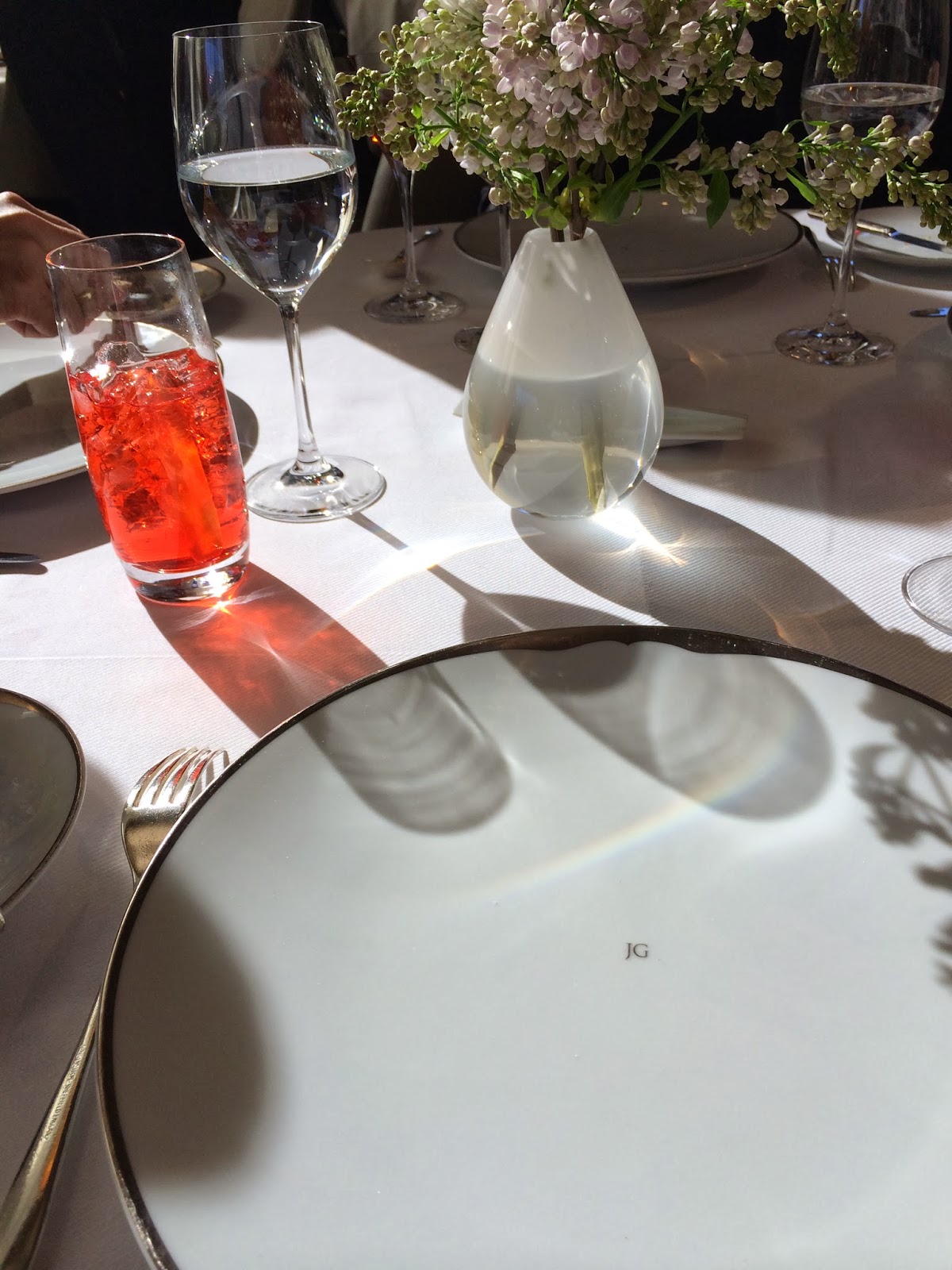Though that light was the adamantine light of winter sun, light it was and as thought-kindling and gladdening as the early summer light that irradiates where I sit this morning – the breakfast table (breakfast is finished and the table cleared) by the kitchen window on the east face of the building.
I seem to do a fair amount of woolgathering whilst at table, be it a breakfast, dining or cocktail table. Perhaps, in the case of the latter it's the bourbon that effects a certain introspection, but whatever the cause, for me, light and contemplation go together.
I did quite a bit of contemplating last evening as I sat in the murk known as atmosphere in the lounge of the Ritz Carlton where friends, always well-dressed, had texted whilst we were at dinner, asking us to join them for drinks. Blazers and khakis, I thought, could pass muster so we went. The best that could be said of the lighting as we walked into the lounge was that it was softly dramatic – or, if one were not so generous, dim and ineffective. Poor lighting in restaurants and hotel lounges is so commonplace as to be unremarkable though the older I get the more irritated I am by the casual ineptness of it. As the Celt chatted with our friends, I sat, sipped and stewed over the scene – constantly, streaming through the puddles of overhead light on the way to the restrooms, came the most badly dressed throng I have ever seen disgrace an elegant hotel lounge.
"...... when a man is tired of Buckhead," I thought, mangling Dr Johnson's famous quote about London, "he is tired of life; for there is in Buckhead all that life can afford." And whilst not untrue, it is perhaps ungenerous, but I do wonder when t-shirts tank tops, running-shorts, exposed cellulite, neck tattoos, flip-flops and baseball caps become acceptable wear even for a crowd that puts its gymshoe-clad feet on cocktail tables in hotel salons?
Not quite as if Toad Hall had been taken over by the ferrets, stoats and weasels from the Wild Wood but shocking, nonetheless. I have little illumination to shed on the phenomenon but perhaps the Great God Pan could remove my memories "lest the awful remembrance should remain and grow, and overshadow mirth and pleasure!"
"Shut it down ... Transit umbra, lux permeant"

























.JPG)













